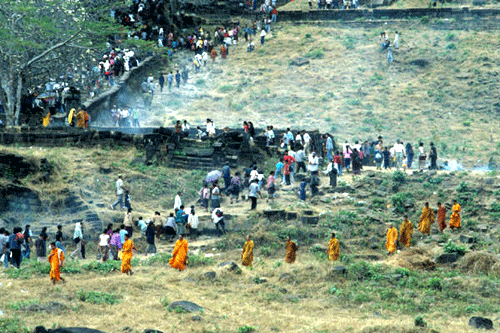
Wat Phu Monumental Complex is the largest archaeological site in Laos and was inscribed by UNESCO as a World Heritage Site in 2000 – the only site with such status in the entire country.
It is a ruined Khmer temple complex in southern Laos. It is located at the base of mount Phu Kao, 6 km from the Mekong river in Champasak province.
Wat Phu (Lao: ວັດພູ), which means “Temple on the Mountain” in Lao language, is one of the oldest archaeological site in Laos, located in Champassak province along the Mekong River in the southern most part of the country.
It is 670km from the capital Vientiane and 50km from Pakse.

Like most Khmer temples, Wat Phou is orientated towards the east. although the axis actually faces eight degrees south of due east, being determined primarily by the orientation of the mountain and the river.
The area of Wat Phu is composed by the islands of Siphandone, where there are 4,000 islands on the Mekong River. In Lao language, “si phan” means 4,000 and “done” means “island”. The water in this part of the country is very clear and fresh.

In the mid 13th century, buddhism replaced hinduism in Wat Phu and it remains today as one can see the Buddhas in the interior of Thevalay Palace. The sacrificial activities definitely changed 500 years ago.
Every year, the Wat Phu festival is held in March during the period of the full moon according to the lunar calendar or mid March by the international calendar. During the festival, there are not only religious ceremonies but also traditional sports competitions such as elephant racing, horse hockey, boat racing and others.

“People from Champassak welcome you with warm smiles.”






